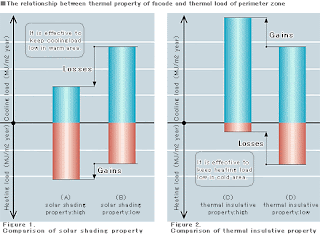In the development process towards a facade design integrated with the building, it is essential to consider how the shading and insulation performance of the openings impacts energy saving and comfort. We will now present four types of environmental facade.
Categories of environmental facades
Environmental facades
In the development process towards a facade design integrated with the building, it is essential to consider how the shading and insulation performance of the openings impacts energy saving and comfort. We will now present four types of environmental facade.
Categories of environmental facades
Environmental facades
In the development process towards a facade design integrated with the building, it is essential to consider how the shading and insulation performance of the openings impacts energy saving and comfort. We will now present four types of environmental facade.
Categories of environmental facades
Environmental facades
In the development process towards a facade design integrated with the building, it is essential to consider how the shading and insulation performance of the openings impacts energy saving and comfort. We will now present four types of environmental facade.
Categories of environmental facades
Low-E glass and internal blinds
- Blinds are located on the interior side
- The heat from solar gain is absorbed, reflected by blinds on the interior side, and is radiated from the room.
- Solar shading property is low.
- Thermal Insulative property is equal to the glazing.
Solar heat gain coefficient
η=0.30~0.55 η=approx.
Thermal transmittance
U=1.5 2.4 W/m2 K U=approx.
*Above values vary with the property of glass and blind
η=0.30~0.55 η=approx.
Thermal transmittance
U=1.5 2.4 W/m2 K U=approx.
*Above values vary with the property of glass and blind
External blinds type
- Blinds are located on the exterior side
- The heat from solar gain is absorbed, reflected by blinds on the interior side, and is radiated from the room.
- Solar shading property is high.
- Thermal Insulative property is equal to the glazing.
Solar heat gain coefficient
η=0.05~0.10 η=approx.
Thermal transmittance
U=1.5 2.4 W/m2 K U=approx.
*Above values vary with the property of glass and blind
η=0.05~0.10 η=approx.
Thermal transmittance
U=1.5 2.4 W/m2 K U=approx.
*Above values vary with the property of glass and blind
Mechanically ventilated type
- This type uses double-pane glass with blinds between the panes, and pass air from the room interior through the cavity by mechanical ventilation.
- The solar heat absorbed by blinds is removed by mechanical ventilation.
- Solar shading property is high.
- Thermal Insulative property is higher than double-pane glass, due to the airflow in the cavity between the panes. (Varies with the air flow rate)
Solar heat gain coefficient
η=0.15~0.25 η=approx.
(when mechanical ventilation is on.)
Thermal transmittance
U=0.5~1.0(W/m2・K) U=approx.
(when mechanical ventilation is on.)
*Above values vary with the property of glass and blind and air flow rate
η=0.15~0.25 η=approx.
(when mechanical ventilation is on.)
Thermal transmittance
U=0.5~1.0(W/m2・K) U=approx.
(when mechanical ventilation is on.)
*Above values vary with the property of glass and blind and air flow rate
Naturally ventilated type
- This type uses double-pane glass with blinds between the panes, and pass air from outside through the cavity by stack effect.
- The solar heat absorbed by blinds is removed by ventilation.
- Solar shading property is high.
- Thermal Insulative property is higher than inner glazing.
Solar heat gain coefficient
η=0.10~0.20 η=approx.
Thermal transmittance
U=1.5~3.5(W/m2・K) U=approx.
*Above values vary with the property of glass and blind
η=0.10~0.20 η=approx.
Thermal transmittance
U=1.5~3.5(W/m2・K) U=approx.
*Above values vary with the property of glass and blind
Thermal property of facade and thermal load of perimeter zone
The relation between solar shading/ thermal insulation property of facade and thermal load of perimeter zone can be described as below.- Solar shading property is high = Low cooling load and high heating load[Figure 1-(A)]
- Thermal insulative property is high = High cooling load and low heating load[Figure 2-(C)]
Thermal property of facade and interior comfort
For occupants of the building interior, comfort is important, not just energy saving. To secure comfort in the perimeter zone close to the facade, the temperature of the interior surface of the facade must be maintained at an appropriate level.
<Summer and intermediate season>
When the solar heat raise the temperature of the interior surface. → Room is maintained at an appropriate level but occupants around window feel hot.<Winter>
When nighttime and cloudy weather fall the temperature of the interior surface. → Room is maintained at an appropriate level but occupants around window feel cold.
*A facade with superior solar shading and thermal insulation property mitigates the impact of the changing exterior environment, reducing changing in the interior surface temperature of the facade to maintain comfort in the interior. Selection of the right facade system is also important for interior comfort as an assessment indicator.
http://www.ykkapfacade.com/expertise/






No comments:
Post a Comment